
Guests
- Kelly McMastersauthor of the book Welcome to Shirley: A Memoir from an Atomic Town.
- Sheena Joyceproducer and co-director of the documentary The Atomic States of America, which is featured at 2012 Sundance Film Festival.
Nuclear power has drawn wide support from both sides of the aisle, with both Republicans and Democrats advancing a pro-nuclear agenda even in the aftermath of last year’s Fukushima disaster in Japan. We speak with Sheena Joyce, co-director of the new documentary “The Atomic States of America,” which is featured at 2012 Sundance Film Festival. We’re also joined by Kelly McMasters, whose book “Welcome to Shirley: A Memoir from an Atomic Town” inspired the film. Joyce says, “We used Kelly’s book and the town of Shirley as kind of a springboard into the issue, to just talk to people really on both sides, but mainly to speak to the people in reactor communities… We wanted to seek an intelligent dialogue.” [includes rush transcript]
Transcript
AMY GOODMAN: We’re broadcasting from Park City, Utah, home of the Sundance Film Festival, the nation’s largest festival for independent cinema. Today we’re talking about nuclear power. Why? Well, the corporate media brings out debate when the establishment in Washington is divided—Democrats debating Republicans. That scope of debate, they bring us. But what happens when the majority of Democrats and Republicans in Congress, and the president, as well, agree? You’re not going to get much coverage of the issue. And that’s the story of nuclear power today. Just two years ago, President Obama gave his State of the Union address and was applauded on both sides of the aisle when he said this.
We’re broadcasting from Park City, Utah, and we’re about to go to a clip of President Obama speaking two years ago at the State of the Union address, when he addressed the issue of nuclear renaissance.
PRESIDENT BARACK OBAMA: [But to create more of these clean energy jobs, we need more production,] more efficiency, more incentives. And that means building a new generation of safe, clean nuclear power plants in this country, because the nation that leads the clean energy economy will be the nation that leads the global economy, and America must be that nation.
AMY GOODMAN: That was President Obama in 2010 giving his State of the Union address. And that is a clip of a new movie that premiered at the Sundance Film Festival called The Atomic States of America. It’s directed by Sheena Joyce and Don Argott. And Sheena Joyce is joining us now.
The film is based on a book called Welcome to Shirley by a Shirley resident, Kelly McMasters. That’s Shirley, Long Island, New York. And Kelly joins us today.
Kelly, let’s start out with, well, why you wrote your book. What is it about Shirley, Long Island? Most people have never heard of the place.
KELLY McMASTERS: That’s true. It’s a service town to the Hamptons, and it’s on the South Shore of Long Island, a kind of little, blue-collar, hardscrabble town that is actually blessed with some beautiful landscape. We’re right along the ocean, and we have a gorgeous wildlife refuge, which I grew up right next to. I moved there when I was four, and I had a pretty bucolic childhood. The community was small and tightly knit, and we had just a really wonderful experience. What we didn’t realize, what most of us didn’t realize, is just north of us, hidden by the Pine Barrens, was the Brookhaven National Laboratory. And we—it happened to be located on top of the sole source drinking water aquifer for three million people, including the people of Shirley, and there were three nuclear reactors there, and all three leaked.
AMY GOODMAN: I want to go to the beginning of the film, which is Kelly McMasters describing growing up in Shirley.
KELLY McMASTERS: Part of me wishes that I could go back and unwrite this story. Of course, I could unwrite my story, but I can’t unwrite the story of what happened in my home town. My family moved to Shirley, Long Island, in 1981. I had a pretty amazing childhood in a small community with a strong sense of neighborhood and solidarity. In about fourth grade, that was the first time that a neighbor got sick and wound up dying. Over the years after that, more and more people got sick, and suddenly that became more the norm.
AMY GOODMAN: That’s an excerpt of The Atomic States of America, that’s directed by Sheena Joyce. Sheena, well, we just heard what Kelly had to say about Shirley. Why you took this book and made a film about it?
SHEENA JOYCE: Well, my co-director Don Argott and I had been given Kelly’s book, and we fell in love with it. We fell in love with her voice, and we fell in love with Shirley, and we fell in love with Kelly. And it happened at a time when we were hearing about this nuclear renaissance. And it also happened at a time when we were hearing about these federal loan guarantees to restart our nation’s nuclear fleet. And we kept hearing, you know, these buzzwords about the nuclear renaissance and nuclear being, you know, clean and safe and green. And we just asked—started asking questions. What is nuclear? Is it safe? And do we need it?
AMY GOODMAN: So, for one minute, I mean, we’re not talking about a Republican president like President Bush. If he had tried to restart nuclear power after decades, a new nuclear power plant—one hasn’t been built in more than 30 years—I don’t think he could have. People would have risen up. But when President Obama announced that he would begin nuclear power plants, the rebuilding of them and the federal loan guarantees, well, he got a bipartisan—he got bipartisan applause. And that’s not something that happens very much in Washington today.
SHEENA JOYCE: It’s true. It’s true.
AMY GOODMAN: So, you look at, well, the atomic states of America.
SHEENA JOYCE: We do, and we used Kelly’s book and the town of Shirley as kind of a springboard into the issue, to just talk to people, you know, really on both sides, but mainly to speak to the people in reactor communities. And it’s certainly not an activist piece. We’re definitely critical, but we just kind of wanted to seek an intelligent dialogue about whether or not man can responsibly harness the atom. And we started in Shirley, but then we traveled to reactor communities all over the country.
AMY GOODMAN: Let’s go back in time, perhaps to the most significant reason why nuclear power plants have not been built in this country for more than 30 years, and that’s Three Mile Island. In this clip, we meet Eric Epstein, chair of the Three Mile Island Alert, explaining how the people in his home town never really questioned the nuclear power plant in town, or just outside of town, Three Mile Island.
ERIC EPSTEIN: [singing] Didn’t want to know you, but I had to love you. La da-da, da-da da-da, da-da da di di di di di.
You’d be less than honest if you didn’t say that this community was strongly supportive of nuclear power. This is meant to be disrespectful. This is not Birkenstock Berkeley. This is not liberal Boston. This is Bible Belt Pennsylvania. In fact, let me just back up. We never really questioned nuclear power. That decision was made for us in the '50s and ’60s. “We're going to go down this path.”
God, I feel like I’m in a Rob Reiner movie.
My dad would drive me down to the plant, and we’d see these big clouds billowing out. And he would assure me that they were benign. You know, I believed my dad. My dad believed the industry. I just thought this was a wonderful, magical technology that had come to rescue us. I mean, energy independence, security independence. We thought it could warm homes at a price too cheap to meter. Everybody bet the house on atomic energy. All of a sudden, all these things came into question on March 28th, 1979.
EMERGENCY ANNOUNCEMENT: Could I have your attention, please? There has been a state of emergency declared on Three Mile Island.
AMY GOODMAN: That’s Eric Epstein, chair of Three Mile Island Alert, in the film The Atomic States of America. Sheena Joyce, the director of that film, sitting with us at Sundance Film Festival, tell us more about him and about what happened.
SHEENA JOYCE: Eric was a jackpot for us. He’s an amazing character. He’s a warm, funny man. And he grew up right outside of Three Mile Island. And as you had mentioned before, you know, he never really questioned nuclear power. It was something that his community was proud of. And he grew up in a place that never questioned what they were being told by, you know, the local government, by the president, by the people at the utility company. And it wasn’t until the accident occurred and things started to go wrong and the people, you know, started asking tough questions and not getting the answers that they deserved, that he became really active in the issue. And he’s been chair of Three Mile Island Alert, and he’s a community advocate, I would say, more than he’s an activist. And that’s something that you find in our film, is just regular people who start asking questions. They’re these unintentional activists. They don’t, you know, seek out to make this their—you know, their life force, their cause, but they do so by necessity.
AMY GOODMAN: We’ll come back to Sheena Joyce, co-director of Atomic States of America, and Kelly McMasters, author of Welcome to Shirley: A Memoir from an Atomic Town, in a minute.
[break]
AMY GOODMAN: We’re broadcasting from the Sundance Film Festival in Park City, Utah, the largest festival of independent cinema in the United States, as we continue with our conversation with Sheena Joyce, the director of the film Atomic States of America, and Kelly McMasters, author of Welcome to Shirley: A Memoir from an Atomic Town.
AMY GOODMAN: When I first started in radio, one of the first documentaries I did was looking at the Shoreham nuclear power plant and the Three Mile Island disaster, because a number of people from Three Mile Island went to Shoreham, Long Island, to warn people: “Don’t let this nuclear power plant go online.” And when people succeeded in preventing the Shoreham nuclear power plant from going full power, I think most people in this country thought nuclear power was dead, at least on Long Island.
KELLY McMASTERS: Right.
AMY GOODMAN: But Kelly McMasters, talk about this plant you just referred to, the Brookhaven National Lab plant, how it is that that was sort of, if you will, under the radar.
KELLY McMASTERS: It was very under the radar. And even the people in my town, who worked mostly service jobs there, didn’t quite get what was going on there. Because it was a federal laboratory and because it is enclosed in these Pine Barrens, you literally can’t see it. It’s on an old Army base, and you can’t—you have no access to it.
AMY GOODMAN: I mean, it’s not providing electricity for the people of Long Island.
KELLY McMASTERS: No, no. And it has won, you know, Nobel Prizes in physics, and it’s done some fantastic medical research. But since 1955, it’s also been leaking and having a really detrimental effect on the neighborhoods around it. It was actually when Shoreham became sort of a focal point of the island, and people realized—you know, we were all saying, “We don’t want nuclear power on the island,” A, because it’s an island. There’s no way off if something happens. We are all on a sole source drinking water aquifer, so if something goes into the water, then it hits everybody, all three million people on the island. Once they started saying, “We don’t want nuclear on the island,” and then they heard, “Wait, we already have it on the island?” and then all the picketers sort of moved from Shoreham over to the lab.
AMY GOODMAN: I want to go back to The Atomic States of America, a remarkable film that has premiered at the Sundance Film Festival. In this clip, you, Kelly, and a local resident introduce us to Carlton Road, which is nicknamed “Death Row” because so many sick people live there.
KELLY McMASTERS: So right now we’re standing on Carlton, the street that was nicknamed “Death Row.” Pretty much almost every house on this street had somebody who was sick with cancer or something else. People started realizing that they weren’t the only sick ones. Their neighbors were sick, as well.
RANDY SNELL: We would meet in people’s basements and their kitchens, and we’d talk about what we found. And, you know, we’d do research, and somebody would find something.
KELLY McMASTERS: All signs seemed to point to what was beyond this barbed-wire fence.
RANDY SNELL: These are all rhabdomyosarcoma cases. A is my daughter. Shirley, here, all the other cases are all within the confines of real close to the Brookhaven National Laboratory. I knew there was a laboratory at Brookhaven. But I pictured this as a bunch of guys in white coats with test tubes, heating them up and, you know, doing whatever type of experiments.
REPORTER: The Brookhaven National laboratory conducts sophisticated nuclear experiments, producing an enormous amount of deadly waste.
RANDY SNELL: The only research I had said that my daughter’s cancer was caused by low-level radiation. And Brookhaven National Laboratory was the only source of that.
REPORTER: The lab sits atop the primary underground water supply for 1.3 million residents of New York’s Long Island.
ROBERT CASEY: It’s certainly not a risk to people outside the lab.
RANDY SNELL: What was explained to me is that “We’re the scientific minds out here. We know what we’re doing. And you need to trust us that we wouldn’t do anything to intentionally harm you.”
AMY GOODMAN: That’s a clip from a new film called The Atomic States of America. Go further with “Death Row.”
KELLY McMASTERS: Well, what was amazing for me when I first watched the film was to see how similar the reactor communities were. In my community, what happened was people were suffering alone in their own houses, and then they would realize, oh, my neighbor is sick, and my other neighbor is sick, and they started meeting in each other’s basements. And something very iconic in the Long Island fight against cancer are these hand-drawn maps that mostly women suffering with breast cancer would start making when they looked at all of their neighbors who were also ill.
AMY GOODMAN: In Long Island, one in nine women suffer from breast cancer?
KELLY McMASTERS: That’s actually—that was the original number back in, I believe, the '80s. And now I think the numbers are one in six or one in seven. So, it is—there's a group called One in Nine, which was one of the first breast cancer advocacy groups. But it’s amazing that even in the time that that group—I mean, the group still exists—the numbers have really jumped. And it was wild for me to watch the film and see, in all of these other reactor communities, that same iconic image of these hand-drawn maps that people, who just are everyday people—they know something is wrong in their community. They’re not sure. They’re not politicians. They’re not scientists. They don’t know how to combat it. So what do they do? They go home, and they drew a map. And over and over, we saw that.
AMY GOODMAN: Introduce us to the Snells.
KELLY McMASTERS: Randy Snell was a bank manager in Manorville, which is right near—it’s a sister town to Shirley. It’s right near the Brookhaven National Laboratory. And his daughter became very ill with rhabdomyosarcoma, which is a soft tissue cancer. And when they were going to—
AMY GOODMAN: She was how old?
KELLY McMASTERS: She was four.
SHEENA JOYCE: Three.
KELLY McMASTERS: Three, yeah. And they—
AMY GOODMAN: A little, beautiful kid.
KELLY McMASTERS: Oh, yes. And he would go to the hospital with her. And all of a sudden, all of the parents realized how many of the kids had rhabdomyosarcoma. And one of the doctors mentioned low-dose radiation as being a possible reason for his little girl’s cancer.
AMY GOODMAN: I mean, this is a remarkably rare cancer—
KELLY McMASTERS: Incredibly.
AMY GOODMAN: —in the United States.
KELLY McMASTERS: Yes, yes. And he went home and thought, how—you know, what kind—where was my daughter exposed to radiation? And then he realized the national—you know, Brookhaven National Laboratory was right in his backyard. And that’s when he started running the numbers. And he came up with more than 22 kids in this small, compact area. It’s supposed to be, I think, one in four million, and just statistically bizarre that this would—there were two kids on one block who had rhabdomyosarcoma. And so, he started really being vocal about it.
And what is fascinating to me, when I interviewed him for my book, was the reaction. Instead of people, his neighbors, rallying, he—you know, some neighbors would approach him in his driveway and say, “Will you just be quiet? You’re going to make our house value go down.” And instead of rallying behind him, they said, “Be quiet.” And it’s really a terrible story of simply, I think, fear, more than anything, because the neighbors, of course, don’t want to bring that into their own house, and they think they can close their door to it.
AMY GOODMAN: Now, you’re a journalist. In fact, you taught one of our producers at Columbia Journalism School.
KELLY McMASTERS: Right.
AMY GOODMAN: So, of course, you went to Brookhaven, right? The National Lab.
KELLY McMASTERS: Yes.
AMY GOODMAN: To get their response.
KELLY McMASTERS: Mm-hmm. It was pretty limited. In fact, in one of my later chapters in the book, I outline my one visit where I was sitting down with one of the representatives, and it was the one time that someone—it seemed like they were almost saying, “Yes, we could have been a better neighbor.” And the PR representative immediately said, “This is all off the record,” where my recorder was out. Everybody knew why I was there. And the meeting was ended. I was guaranteed a week of access, and I was given basically three days. And so, after that first morning, I think after they saw the questions that I was asking, I was basically not given much access.
But I did get into their library, and that’s where a lot of the documentation from my book came from. They have a very—it’s technically a public library, except nobody can actually get into it. And I spent hours and hours there, photocopying all of their internal documents related to a lot of the spills and leaks and things like that, so—and just the kind of community public relations documents that were discussing how to handle the community, in terms of telling them—you know, they really diagnosed the community in terms of what they could get away with, in terms of, you know, how much to tell us and how much not to tell us.
And at the meetings where they would address—you know, the scientists and the public relations people would address the—once the information about the leaks came out, and these meetings would be held with the community, and the scientists would make fun of them for not being able to pronounce some of what was leaking, like strontium or tritium, and they would laugh at them. And that arrogance—
AMY GOODMAN: At the residents.
KELLY McMASTERS: Yes. And that arrogance was very similar to what Eric spoke about after Three Mile Island. “Why do you need to know this?”
AMY GOODMAN: And yet, the questioning, the activism, the journalism, shut the last nuclear power plant of Brookhaven. Explain when that happened and how it happened.
KELLY McMASTERS: Well, it was sort of a surprise. They, of course, said—it was closed temporarily in the midst of the activism. Technically, it was decommissioned because there wasn’t any more use for it. That’s the official reason. But it seemed very obvious that the uproar had something to do with it, and the leaks.
AMY GOODMAN: Sheena, the latest news out of Vermont is that the state wanted to close the nuclear power plant, with the full support of Governor Shumlin, who had been a state legislator from the area of Vermont Yankee, first was a supporter, but now the state has wanted to shut it down, and the legislature voted for this.
SHEENA JOYCE:
AMY GOODMAN: But a court has prevented it from happening.
SHEENA JOYCE: Right.
AMY GOODMAN: Prevented a democratic government from closing down an entity of a private corporation.
SHEENA JOYCE: Right. And it’s an interesting case for, I think, for Indian Point, which is one of the places featured in our film.
AMY GOODMAN: Indian Point.
SHEENA JOYCE: Which is up for relicensing right now.
AMY GOODMAN: In New York.
SHEENA JOYCE: That’s correct. And in a similar situation, the governor there would like it to be closed and is facing resistance.
AMY GOODMAN: And so, it’s sending a real message, this court case.
SHEENA JOYCE: It certainly is.
AMY GOODMAN: You have a great clip in the film of David Letterman saying he wants Indian Point shut down.
SHEENA JOYCE: That’s right. Let’s see what kind of pull he has, and maybe he could do more than the governor. We’ll see.
AMY GOODMAN: And talk about the other nuclear power plants and communities that you cover.
SHEENA JOYCE: Another community that we go to is Braidwood in Illinois, which has a very similar story to Shirley, Long island. And as Kelly mentioned, one thing that was eerie to us is, as we went from town to town speaking to people, there were these unlikely activists, there were these, you know, moms and dads and grandmoms who were noticing that all of their neighbors were getting sick and would meet in each other’s basements and kitchens and start to draw a map. And it all kind of starts with dots on a map. And it was eerie to us how the story kept repeating, and also how people were so, you know, necessarily, busy and focused on their own communities, they almost don’t have the chance to lift their heads up and look around and see that there are other people in other parts of this country dealing with the same thing.
AMY GOODMAN: I want to go to the latest nuclear catastrophe, which was Fukushima, and ask you how that happening in the midst of your filming changed your view of things. But let’s go to the clip in this film where we meet Paul Gallay, president of Riverkeeper, a group that’s been actively lobbying to close the Indian Point nuclear power plant in Buchanan, New York, talking about the Fukushima disaster and how it reignited the debate over the aging plant.
PAUL GALLAY: March 23rd. It is March 23rd, isn’t it? The days are all kind of blending together right now. It’s almost two weeks after the disaster in Japan. The news continues to get worse over there. We’re sitting here in New York, and there are stories coming out every time you turn around about Indian Point. Could it happen here? What are the risks?
DAVID LETTERMAN: Nuclear power—I don’t want Indian Point. I live down the street, and it’s like in a cul-de-sac, and I’m just down the—I don’t want that anymore. How can—how we get them to take that away?
PAUL GALLAY: For 10 years, Riverkeeper has been watching Indian Point from the standpoint of safety.
MICHIO KAKU: In fact, even one NRC official said that if we had a chance to relicense that reactor, knowing today, we probably would not license that reactor.
DAVID LETTERMAN: Not license, yeah, yeah. That’s not—that’s, as the kids say, a no-brainer.
PAUL GALLAY: Before the Japan earthquakes, people were not paying attention to the risk of accident, risk of radiation release. Now they are.
AMY GOODMAN: That’s an excerpt from the remarkable documentary called The Atomic States of America, which is co-directed by Sheena Joyce and Don Argott. Sheena is with us now. Sheena, talk about Fukushima happening in the midst of you finalizing this documentary.
SHEENA JOYCE: Well, it was certainly unreal for us. We were actually on our way to South by Southwest Film Festival with another film that we had. And Don and I are also a couple, and we were packing. And we saw, you know, the crawl come across the TV first that there was an earthquake in Japan. And my cousin lived in Tokyo at the time. So, immediately, it was—you know, you think worrying about your family and what was going on.
And then we had heard that there were nuclear reactors that had gone offline. And then, suddenly, you know, our stomachs flipped, and our whole story changed. And we knew that not only, you know, would life be different for so many people on March 12th, but that our film would have to change entirely. So we kind of remade the film on March 12th. It really did—it reframed our film. It reframed the dialogue in this country. And it changed our characters. So, we had this new perspective.
And I think what’s worth mentioning, speaking again of eerie, is the last question that I would ask in every interview, no matter what side of the fence the person I was speaking to was on, I would say, “Well, what do you think it’s going to take to make a change? What do you think it’s going to—you know, what would it take for people to start paying attention to this issue?” And every single person, particularly, you know, no the anti side, would say, “I hate to say it, it’s not a—it’s going to be an accident, and it’s not a question of 'if,' it’s a question of 'where, when and what will it look like.'”
AMY GOODMAN: And people on the pro-nuclear side, did they say the same thing?
SHEENA JOYCE: They did not say the same thing. They—
AMY GOODMAN: But did you find people changing after Fukushima at all, or just hardening their positions?
SHEENA JOYCE: You know, it’s interesting. I think that there are some people who were interested in restarting a new generation of nuclear reactors. They certainly are not for keeping, you know, the old reactors. But even the pro-nuclear people who are interested in this new wave of generators may have changed their minds.
AMY GOODMAN: Do you think it’s changed the conversation in the United States around nuclear power? Has it in any way raised questions about this nuclear renaissance that President Obama is hailing?
SHEENA JOYCE: I think, for the people who live in reactor communities, it has. I’m not so sure about the rest of the country. I guess we’ll see. And I’m hoping—you know, as I said in the beginning, our goal with this film was just to ask questions and to try and spark a dialogue. And hopefully, you know, we can help that.
AMY GOODMAN: Finally, Kelly McMasters, you don’t live in Shirley anymore.
KELLY McMASTERS: I don’t. But in a way, I always will, and so will everyone else, as long as we have these reactors online.
AMY GOODMAN: That was Kelly McMasters, author of Welcome to Shirley: A Memoir from an Atomic Town, and Sheena Joyce, director of The Atomic States of America. The documentary premiered here at the Sundance Film Festival.

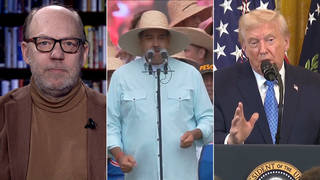
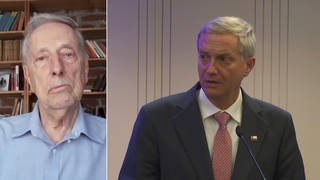
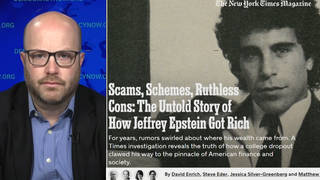

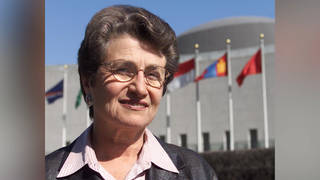




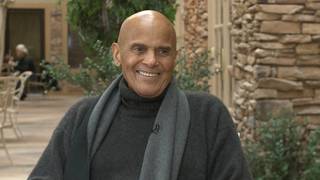

Media Options